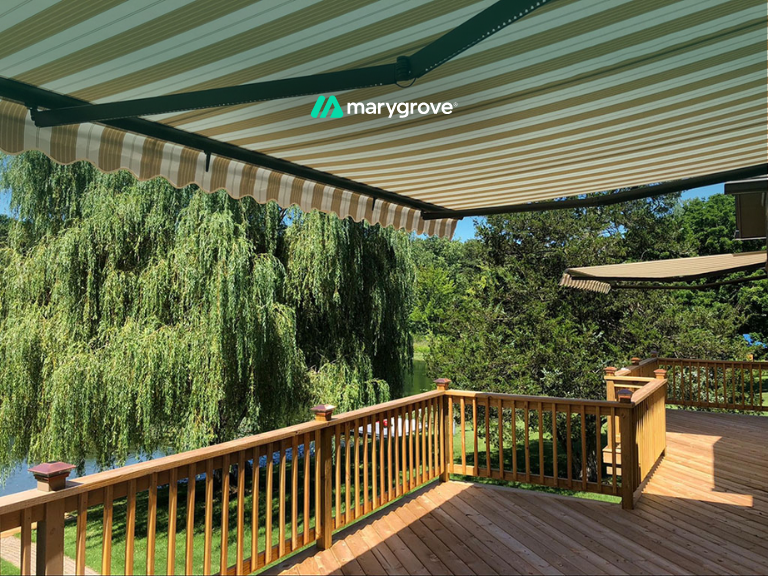Shading plants keeps them cool, protects leaves from sunburn, prevents fruit drop, and maintains steady growth even in peak summer heat. The right approach filters sunlight, lowers stress, and helps plants thrive without sacrificing essential light.
Quick Guide: The Best Way to Shade Plants
Keeping plants healthy during hot months is all about balance. The best shading methods prevent overheating while still letting in enough light for photosynthesis. Here’s what works:
- Retractable Awnings: Provide instant, adjustable shade for patios and nearby garden beds.
- Louvered Pergolas: Control sun exposure with tilting louvers while cooling larger areas.
- Shade Cloth Frames: Target vegetable beds with light-filtering cloth to reduce leaf burn.
- Umbrellas and Canopies: Quick, movable shade for small gardens and containers.
- Living Shade: Trees or trellises offer natural, dappled light for cooler soil conditions.
- Floating Row Covers: Protect seedlings or heat-sensitive crops while retaining moisture.
Shading plants regulates temperature, conserves moisture, prevents sunscald, and supports flowering during heatwaves. It’s about controlled sunlight, not darkness.
Smart shading strengthens your garden and turns your backyard into a cooler, more functional space, here’s how to make it work seamlessly.
Why Too Much Sun Hurts More Than It Helps
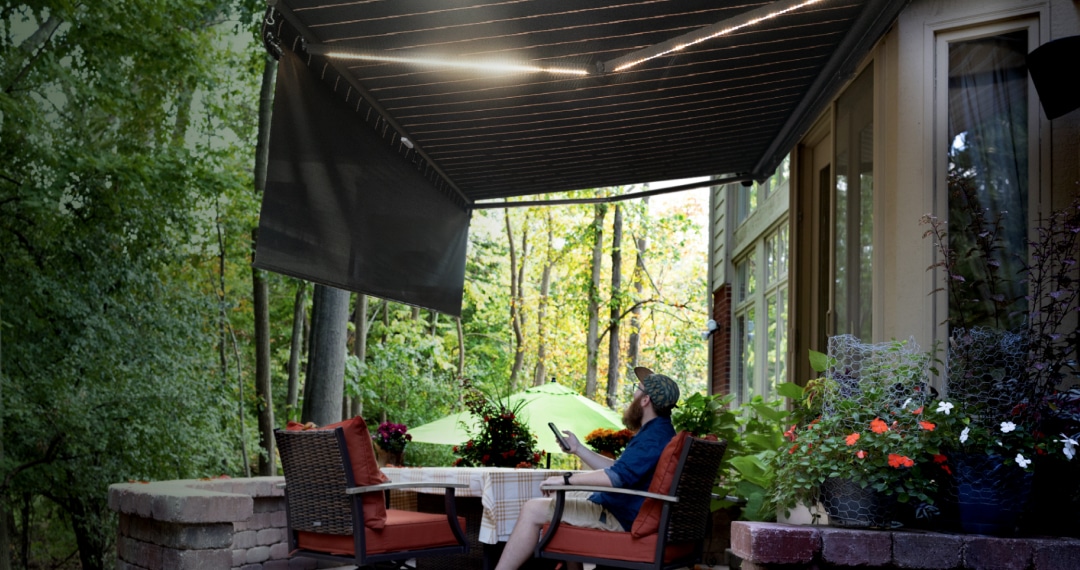
Most gardeners know sunlight is essential for plant growth, but too much can quickly turn harmful.
During peak summer, prolonged exposure to intense sunlight stresses plants, limiting their ability to function and thrive.
1. Plant Heat Stress and Photosynthesis Slowdown
When temperatures rise above 94°F, photosynthesis slows dramatically.
This vital energy-conversion process stalls, leading to reduced growth and fruit drop in crops like tomatoes, peppers, and cucumbers.
Plants shift focus from producing to merely surviving. Shading helps maintain ideal temperatures, ensuring steady photosynthesis.
2. Visible Symptoms of Sun Damage
Overexposed plants show clear signs: curled leaves to reduce surface area, pale or bleached sunscald patches, and flowers that drop prematurely.
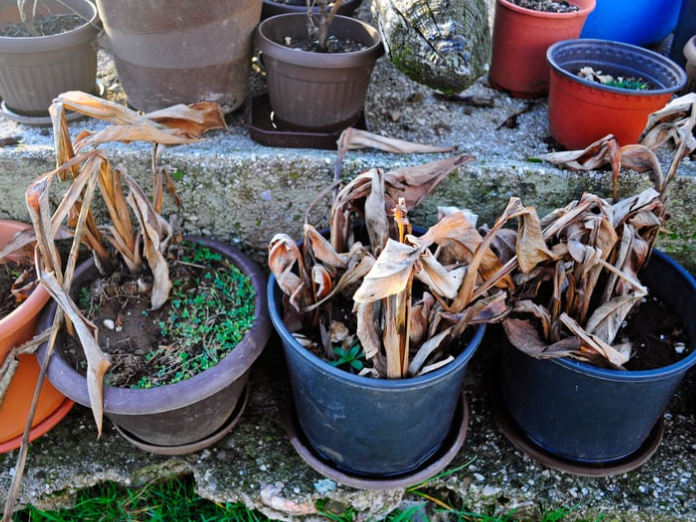
Fruiting vegetables are particularly vulnerable, often producing poorly during heatwaves. Early recognition and shading prevent lasting damage.
3. The Role of Shading in Optimal Growth
Most plants thrive when leaf temperatures remain between 50–68°F.
Shading reduces excess solar radiation, stabilizing temperatures and improving nutrient uptake, boosting yields and resilience.
Important: Does Shading Stunt Growth?
Shading only hinders plants if overdone.
Using proper densities, typically 30–60%, filters heat while allowing enough light for photosynthesis. Balanced shading fosters healthy growth rather than slowing it.
By recognizing how excess sun impacts plant health and how shading restores balance, you set the groundwork for healthier, more productive gardens.
Now, let’s explore practical shading methods that not only protect plants but also enhance your outdoor living space.
Helpful Resource → How to Keep Your Patio Cool in Summer | 15 Proven Ideas
Proven Ways to Shade Plants for Healthier Growth
Shading is more than just protection from sunlight; it’s about giving plants the right balance to thrive.
Among the many options available, retractable awnings and retractable louvered pergolas lead the way by offering both plant protection and outdoor comfort for your home.
1. Retractable Awnings: Shade That Doubles as Home Comfort
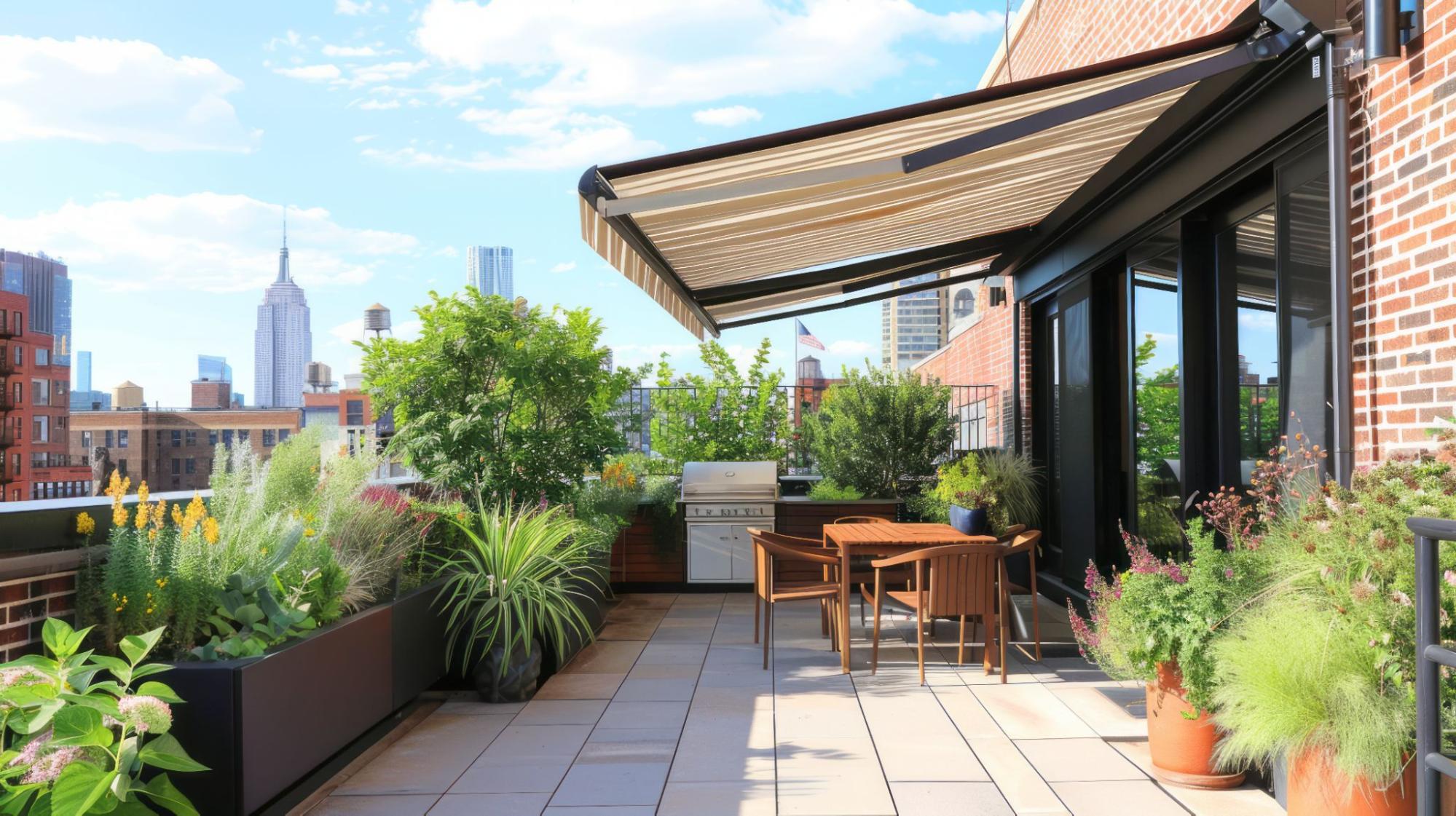
Retractable awnings create instant shade over patios, decks, or garden edges, cooling both plants and surrounding spaces.
Their flexible design adapts to daily sun patterns, helping reduce heat stress while blending seamlessly with outdoor living areas.
- Cuts radiant heat and keeps nearby plants cooler.
- Adjustable angles let you control sun exposure as it shifts.
- Side screens can block wind or light rain for extra protection.
- Smart sensors auto-retract during storms to prevent damage.
Ideal for gardeners who want consistent plant shading paired with a comfortable outdoor space that stays cooler during summer.
2. Shade Cloth Frames: Lightweight, Targeted Coverage

Shade cloth frames are a cost-effective way to protect vegetable beds or delicate crops.
They block harsh sunlight without eliminating needed light, creating a balanced environment for plants in summer heat.
- Prevents leaf burn and heat stress in peak summer.
- Helps conserve soil moisture for healthier roots.
- Easy to move or adjust as plants mature or seasons shift.
- Cost-effective and quick to set up for home gardeners.
An adaptable solution for seasonal gardens, ideal for maintaining plant health without overcomplicating your setup.
Helpful Resource → Awnings Vs. Shade Sails: How To Decide Which Is Better
3. Retractable Louvered Pergola: Elegance Meets Functionality
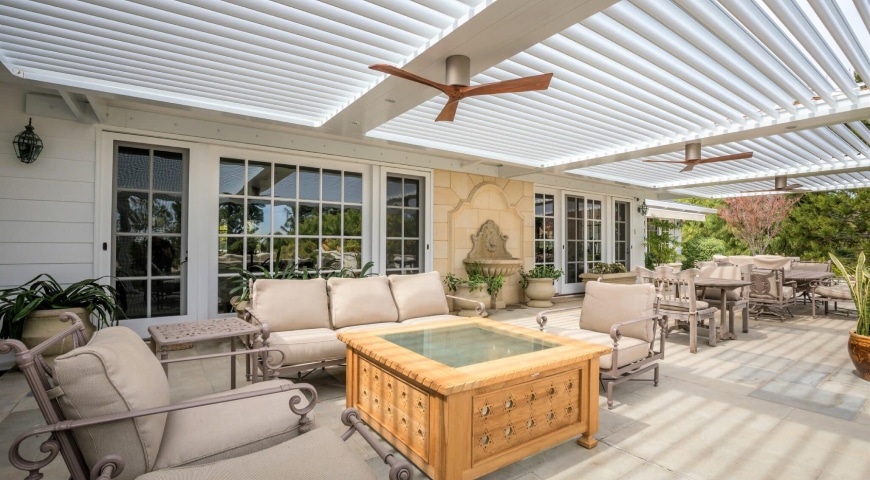
This premium structure uses motorized louvers to filter sunlight or close completely during rain. Retractable louvered pergola maintains steady temperatures for plants while doubling as a striking feature in any backyard landscape.
- Louvers tilt to filter harsh sunlight or fully close for rain coverage.
- Stabilizes temperatures around plants to reduce heat stress.
- Built to withstand wind and unpredictable weather.
- Adds visual appeal and a premium feel to any backyard.
Perfect for those who want year-round shading that combines plant protection with high-end outdoor living.
4. Portable Umbrellas and Canopies
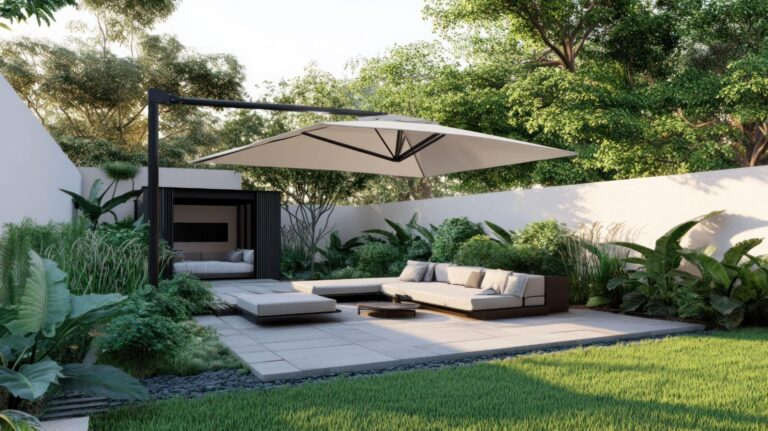
Portable umbrellas and canopies are quick, flexible solutions ideal for small gardens or container plants. They can be moved easily to provide targeted shade during the hottest parts of the day.
- Offer instant relief for heat-sensitive plants in exposed spots.
- Easy to reposition based on sun angles and plant locations.
- Inexpensive option for renters or those avoiding permanent installations.
- Allow morning sun exposure while blocking intense midday heat.
A practical choice for anyone needing movable, short-term shading without complex setup or cost.
5. Living Shade: Trees and Vertical Trellises

Natural shade from trees or trellises provides filtered sunlight and cooler soil conditions.
This approach mimics woodland environments where shade-loving plants thrive and creates long-term climate stability in the garden.
- Reduces direct sun exposure while allowing dappled light.
- Provides consistent cooling for soil and nearby plants.
- Supports biodiversity and enhances visual appeal.
- Offers seasonal variation with deciduous trees for winter sun.
A long-lasting solution that pairs plant care with natural beauty, making it ideal for permanent garden design. But requires high maintenance.
6. Floating Row Covers for Seasonal Crops
Floating row covers are lightweight fabrics laid over plants to offer instant shade and moderate temperatures.
They’re especially useful during extreme heat or for young seedlings that need extra protection.
- Shields tender plants from scorching sunlight during peak heat.
- Helps retain soil moisture and reduce evaporation.
- Provides a barrier against insects and small pests.
- Easy to install, remove, and reuse across growing seasons.
A simple yet effective solution for quick, adaptable shading during critical growth phases.
By combining these shading solutions, you create a strong foundation for healthier plants and more resilient gardens.
Next, let’s look at simple yet effective techniques to fine-tune your shading approach for even better results.
Smart Shading Tips That Make Plants Thrive
Shading works best when it’s applied thoughtfully.
With a few simple adjustments, you can create the perfect balance of sun and shade to keep your plants healthy and productive, even in the hottest months.
- Angle for Morning Sun, Block Midday Heat: Allow early light for photosynthesis while shielding plants during peak afternoon heat to protect fruiting crops like peppers and tomatoes.
- Choose Proper Shade Density (30–60%): Light filtering is key. This range prevents overheating without hindering growth or flowering in sun-loving plants.
- Mix Seasonal Setups: Adjust shade positions or rotate umbrellas as sun angles change throughout the year to maintain even coverage.
- Elevate Cloth for Airflow: Keep cloth raised slightly above plants to improve circulation and reduce the risk of fungal disease.
- Use Adjustable Systems: Retractable awnings or louvered pergolas adapt easily to changing light and weather, offering instant control.
- Combine Shade with Drip Irrigation: Cooling soil with shade and steady watering helps roots stay healthy and plants flourish during heat waves.
- Guard Against Wildlife: Install light fencing around shaded gardens to prevent deer or rabbits from sheltering among your crops.
These tips help maximize plant growth by using shade strategically rather than excessively.
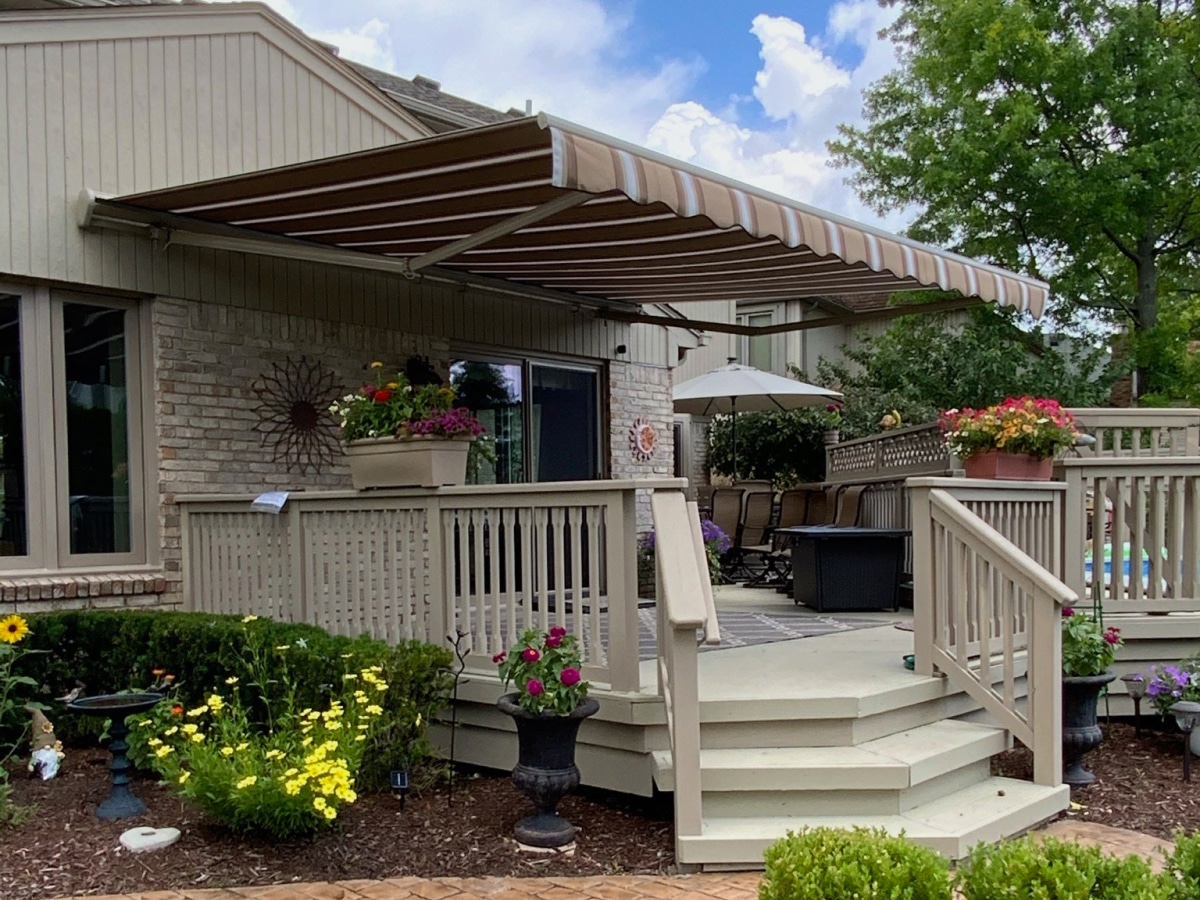
By applying these smart shading techniques, you build a strong foundation for plant health and garden productivity.
Now, let’s explore how layering multiple shading methods can work together to create even more effective and versatile protection.
Hybrid Shade Solutions: The Power of Layering
Layering different shading methods can create a more balanced environment for plants, especially in gardens exposed to varying sun angles and weather conditions.
Combining multiple options allows for targeted protection without over-reliance on one approach.
- Pair Retractable Awnings and Louvered Pergolas: Use awnings to cool patios and nearby garden beds, while pergolas provide adaptable shading for larger areas or heat-sensitive plants.
- Add Portable Umbrellas for Flexibility: Move them around to cover container plants or specific spots that need temporary relief during extreme heat.
- Blend Natural and Structural Shade: Planting trees or using trellises near permanent structures creates filtered sunlight while stabilizing garden temperatures.
- Use Shade Cloth with Irrigation: Combine lightweight frames with drip systems to keep soil cooler and reduce water loss.
- Adjust Coverage Gradually: Switch between dense and lighter shading mid-season to match plant maturity and avoid growth slowdowns.
Layering shade techniques transforms your garden into a controlled, thriving environment where plants flourish and outdoor spaces stay inviting.
With the right combinations, you achieve both comfort and productivity in every corner of your backyard.
Final Takeaway: Shade Is About Control, Not Darkness
The best approach to shading isn’t about eliminating sunlight, it’s about managing it.
Effective shade filters intense rays, keeps temperatures stable, and allows plants to thrive without the risk of sun damage.
When applied thoughtfully, it supports healthy growth while creating outdoor spaces that are cooler and more enjoyable.
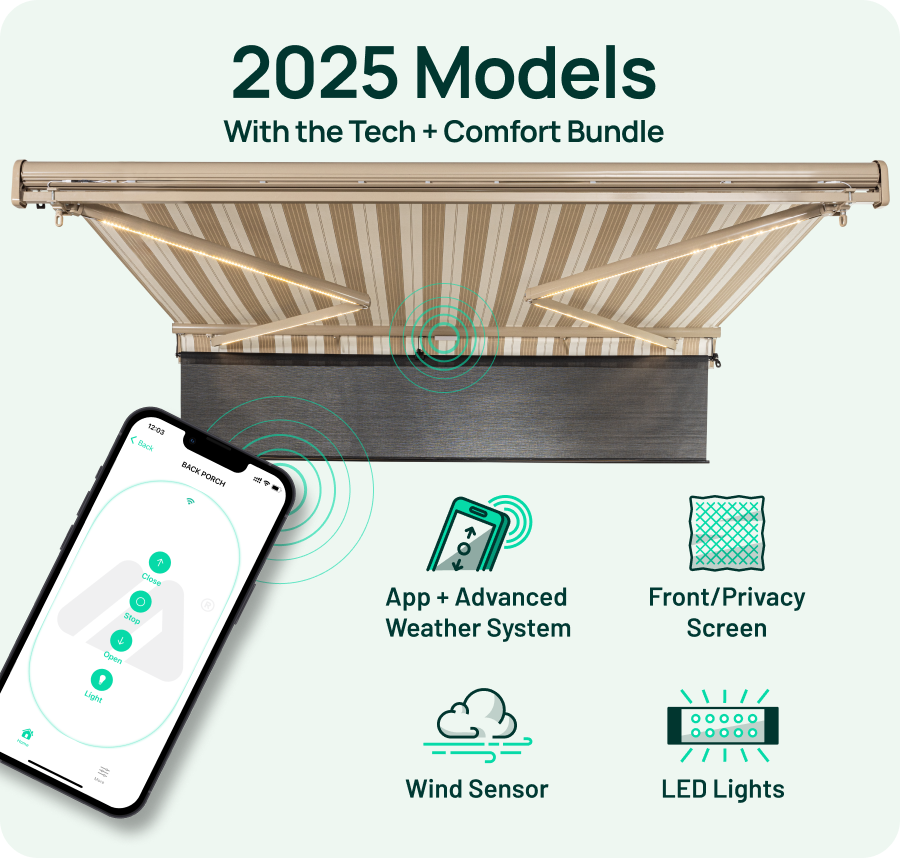
Shade is ultimately about precision, using the right tools in the right way to protect your garden and improve your surroundings.
For homeowners ready to take their outdoor space to the next level, Marygrove’s retractable awnings and louvered pergolas offer adaptable shading that benefits both plants and people.
With adjustable coverage and weather-smart design, they’re built to create a backyard that looks beautiful, feels comfortable, and helps your garden flourish.
